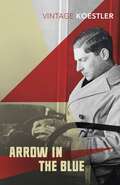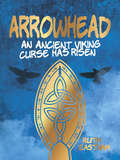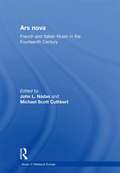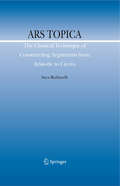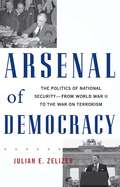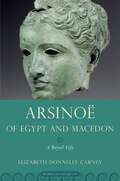- Table View
- List View
Arriving Where We Started: Aristotle and Business Ethics (Issues in Business Ethics #51)
by Edwin M. HartmanEdwin Hartman offers an account of his intellectual journey from Aristotle to organization theory to business ethics to an Aristotelian approach to business ethics. Aristotle’s work in metaphysics and psychology offers some insights into the explanation of behavior. Central to this sort of explanation is characteristically human rationality. Central to successful organizations is characteristically human sociability. That human beings are by nature rational and sociable is the basis of Aristotle’s ethics. Though a modern organization is not a polis in Aristotle’s sense, it has good reason to treat people as rational and sociable on the whole, and thereby to preserve the organization as a commons of people linked by something much like Aristotle’s account of strong friendship. Organizations that are successful in this respect, particularly those that deal with a nationally diverse workforce, may offer a far-reaching and attractive model.
An Arrow Against All Tyrants: Introduction by Ian Gadd
by Richard OvertonIn 1646, Richard Overton, a Leveller, penned a political pamphlet which asserted the inalienable rights of the individual, from his cell in Newgate Gaol. Reprinted here is Overton's bold, declamatory pamphlet, with an introduction by Ian Gadd, Professor of English Literature at Bath Spa University.
Arrow in the Blue
by Arthur KoestlerThe first volume of the remarkable autobiography of Arthur Koestler, author of Darkness at Noon.In 1931, Arthur Koestler joined the Communist Party, an event he felt to be second only in importance to his birth in shaping his destiny. Before that point, he lived a tumultuous and varied existence. He was a member of the duelling fraternity at the University of Vienna; a collective farm worker in Galilee; a tramp and street vendor in Haifa; the editor of a weekly paper in Cairo; the foreign correspondent of the biggest continental newspaper chain in Paris and the Middle East; a science editor in Berlin; and a member of the North Pole expedition of the Graf Zeppelin. Written with enormous zest, joie de vivre and frankness, Arrow in the Blue is a fascinating self-portrait of a remarkable young man at the heart of the events that shaped the twentieth century. The second volume of Arthur Koestler's autobiography is The Invisible Writing.
Arrowhead: An ancient Viking curse has risen
by Ruth EasthamWhen a playground scrap becomes a fight to the death, and an ancient curse awakes, Jack and Emma must uncover the arrowhead’s secrets – before a terrible evil is unleashed.Award-winning children’s author Ruth Eastham weaves twists, turns and adventures into the rollercoaster ride that is Arrowhead: aspects of Norse mythology, the importance of friendship and teamwork, race-against-the-clock tension, and terror as the world as you know it is turned upside down.Follow the three friends Jack, Emma and Skuli on their mission to save the world from the evil curse, as you are drawn into an emotional and thrilling journey – but one not to be missed.
Arrowood and The Meeting House Murders (An Arrowood Mystery #4)
by Mick FinlayLondon Society takes their problems to Sherlock Holmes. Everyone else goes to Arrowood. ‘Finlay depicts a seedy, desperate London and vivid characters with considerable skill’ The Times
Arrowood and the Thames Corpses (Arrowood Mystery Ser. #03)
by Mick FinlayA gripping historical crime novel, perfect for fans of C. J. Sansom ’Crackles with energy and wit’ The Times
Arrows of Fury: Empire II (Empire series #2)
by Anthony RichesThe Battle of the Lost Eagle saved Hadrian's Wall , but the new Roman governor of Britannia must stamp out the rebellion of the northern tribes or risk losing the province.Rampaging south with sword and flame under the command of their murderous chieftain Calgus, they have stretched his forces to the limit...'A master of the genre' The TimesFor Marcus - now simply Centurion Corvus of the 1st Tungrian cohort - the campaign has become doubly dangerous. As reinforcements flood into Britannia he is surrounded by new officers with no reason to protect him from the emperor's henchmen. Death could result from a careless word as easily as from an enemy spearWorse, one of them is close on his heels. While Marcus is training two centuries of Syrian archers to survive a barbarian charge and then take the fight back to their enemy, the new prefect of the 2nd Tungrians has discovered his secret. Only a miracle can save Marcus and the men who protect him from disgrace and death . . . Anthony Riches once again brings meticulous research together with brilliant storytelling to capture the authentic feel of what life was like for the Roman Army in a brutal war with a remorseless enemy.
Arrowstorm: The World of the Archer in the Hundred Years War
by Richard WadgeThis book chronicles the overwhelming importance of the military archer in the late medieval period. The longbow played a central role in the English victory at the battles of Crecy and Agincourt. Completely undermining the supremacy of heavy cavalry, the longbow forced a wholesale reassessment of battlefield tactics. Richard Wadge explains what made England's longbow archers so devastating, detailing the process by which their formidable armament was manufactured and the conditions that produced men capable of continually drawing a bow under a tension of 100 pounds. Uniquely, Wadge looks at the economics behind the supply of longbows to the English army and the social history of the military archer. Crucially, what were the advantages of joining the first professional standing army in England since the days of the Roman conquest? Was it the pay, the booty, or the glory? With its painstaking analysis of contemporary records, Arrowstorm paints a vivid portrait of the life of a professional soldier in the war which forged the English national consciousness.
Ars et Ingenium: The Embodiment Of Imagination In Francesco Di Giorgio Martini's Drawings (Routledge Research in Architecture)
by Pari RiahiWhen did drawing become an integral part of architecture? Among several architects and artists who brought about this change during the Renaissance, Francesco di Giorgio Martini’s ideas on drawing recorded in his Trattati di architettura, ingegneria e arte militare (1475-1490) are significant. Francesco suggests that drawing is linked to the architect’s imagination and central in conveying images and ideas to others. Starting with the broader edges of Francesco’s written work and steadily penetrating into the fantastic world of his drawings, the book examines his singular formulation of the act of drawing and its significance in the context of the Renaissance. The book concludes with speculations on how Francesco’s work is relevant to us at the onset of another major shift in architecture caused by the proliferation of digital media.
Ars et Ingenium: The Embodiment of Imagination in Francesco di Giorgio Martini's Drawings (Routledge Research in Architecture)
by Pari RiahiWhen did drawing become an integral part of architecture? Among several architects and artists who brought about this change during the Renaissance, Francesco di Giorgio Martini’s ideas on drawing recorded in his Trattati di architettura, ingegneria e arte militare (1475-1490) are significant. Francesco suggests that drawing is linked to the architect’s imagination and central in conveying images and ideas to others. Starting with the broader edges of Francesco’s written work and steadily penetrating into the fantastic world of his drawings, the book examines his singular formulation of the act of drawing and its significance in the context of the Renaissance. The book concludes with speculations on how Francesco’s work is relevant to us at the onset of another major shift in architecture caused by the proliferation of digital media.
The 'Ars musica' Attributed to Magister Lambertus/Aristoteles
by translatedbyKaren DesmondThe treatise on musica plana and musica mensurabilis written by Lambertus/Aristoteles is our main witness to thirteenth-century musical thought in the decades between the treatises of Johannes de Garlandia and Franco of Cologne. Most treatises on music of this century - except for Franco‘s treatise on musical notation - survive in only a single copy; Lambertus‘s Ars musica, extant in five sources, is thus distinguished by a more substantial and long-lasting manuscript tradition. Unique in its ambitions, this treatise presents both the rudiments of the practice of liturgical chant and the principles of polyphonic notation in a dense and rigorous manner like few music treatises of its time - a conceptual framework characteristic of Parisian university culture in the thirteenth century. This new edition of Lambertus‘s treatise is the first since Edmond de Coussemaker‘s of 1864. Christian Meyer‘s meticulous edition is displayed on facing pages with Karen Desmonds English translation, and the treatise and translation are prefaced by a substantial introduction to the text and its author by Christian Meyer, translated by Barbara Haggh-Huglo.
The 'Ars musica' Attributed to Magister Lambertus/Aristoteles (Royal Musical Association Monographs)
by translatedbyKaren DesmondThe treatise on musica plana and musica mensurabilis written by Lambertus/Aristoteles is our main witness to thirteenth-century musical thought in the decades between the treatises of Johannes de Garlandia and Franco of Cologne. Most treatises on music of this century - except for Franco‘s treatise on musical notation - survive in only a single copy; Lambertus‘s Ars musica, extant in five sources, is thus distinguished by a more substantial and long-lasting manuscript tradition. Unique in its ambitions, this treatise presents both the rudiments of the practice of liturgical chant and the principles of polyphonic notation in a dense and rigorous manner like few music treatises of its time - a conceptual framework characteristic of Parisian university culture in the thirteenth century. This new edition of Lambertus‘s treatise is the first since Edmond de Coussemaker‘s of 1864. Christian Meyer‘s meticulous edition is displayed on facing pages with Karen Desmonds English translation, and the treatise and translation are prefaced by a substantial introduction to the text and its author by Christian Meyer, translated by Barbara Haggh-Huglo.
Ars nova: French and Italian Music in the Fourteenth Century
by John L. Nádas Michael Scott CuthbertIn the early fourteenth century, musicians in France and later Italy established new traditions of secular and sacred polyphony. This ars nova, or "new art," popularized by theorists such as Philippe de Vitry and Johannes de Muris was the among the first of many later movements to establish the music of the present as a clean break from the past. The rich music of this period, by composers such as Guillaume de Machaut and Francesco Landini, is not only beautiful, but also rewards deep study and analysis. Yet contradictions and gaps abound in the ars nova of the fourteenth and early fifteenth centuries-how do we read this music? how do we perform this music? what was the cultural context of these performances? These problems are well met by the ingenuity of approaches and solutions found by scholars in this volume. The twenty-seven articles brought together reflect the broad methodological and chronological range of scholarly inquiry on the ars nova.
Ars nova: French and Italian Music in the Fourteenth Century
by John L. Nádas Michael Scott CuthbertIn the early fourteenth century, musicians in France and later Italy established new traditions of secular and sacred polyphony. This ars nova, or "new art," popularized by theorists such as Philippe de Vitry and Johannes de Muris was the among the first of many later movements to establish the music of the present as a clean break from the past. The rich music of this period, by composers such as Guillaume de Machaut and Francesco Landini, is not only beautiful, but also rewards deep study and analysis. Yet contradictions and gaps abound in the ars nova of the fourteenth and early fifteenth centuries-how do we read this music? how do we perform this music? what was the cultural context of these performances? These problems are well met by the ingenuity of approaches and solutions found by scholars in this volume. The twenty-seven articles brought together reflect the broad methodological and chronological range of scholarly inquiry on the ars nova.
Ars Topica: The Classical Technique of Constructing Arguments from Aristotle to Cicero (Argumentation Library #15)
by Sara RubinelliArs Topica is the first full-length study of the nature and development of topoi, the conceptual ancestors of modern argument schemes, between Aristotle and Cicero. Aristotle and Cicero configured topoi in a way that influenced the subsequent tradition. Their work on the topos-system grew out of an interest in creating a theory of argumentation which could stand between the rigour of formal logic and the emotive potential of rhetoric. This system went through a series of developments and transformations resulting from the interplay between the separate aims of gaining rhetorical effectiveness and of maintaining dialectical standards. Ars Topica presents a comprehensive treatment of Aristotle’s and Cicero’s methods of topoi and, by exploring their relationship, it illuminates an area of ancient rhetoric and logic which has been obscured for more than two thousand years. Through an interpretation which is philologically rooted in the historical context of topoi, the book lays the ground for evaluating the relevance of the classical approaches to modern research on arguments, and at the same time provides an introduction to Greek and Roman theory of argumentation focussed on its most important theoretical achievements.
Arsenal of Democracy: The Politics of National Security--From World War II to the War on Terrorism
by Julian E. ZelizerIt has long been a truism that prior to George W. Bush, politics stopped at the water&’s edge—that is, that partisanship had no place in national security. In Arsenal of Democracy, historian Julian E. Zelizer shows this to be demonstrably false: partisan fighting has always shaped American foreign policy and the issue of national security has always been part of our domestic conflicts. Based on original archival findings, Arsenal of Democracy offers new insights into nearly every major national security issue since the beginning of the cold war: from FDR&’s masterful management of World War II to the partisanship that scarred John F. Kennedy during the Cuban Missile Crisis, from Ronald Reagan&’s fight against Communism to George W. Bush&’s controversial War on Terror. A definitive account of the complex interaction between domestic politics and foreign affairs over the last six decades, Arsenal of Democracy is essential reading for anyone interested in the politics of national security.
Arsinoe of Egypt and Macedon: A Royal Life (Women in Antiquity)
by Elizabeth Donnelly CarneyThe life of Arsinoë II (c. 316-c.270 BCE), daughter of the founder of the Ptolemaic dynasty, is characterized by dynastic intrigue. Her marriage to her full brother Ptolemy II, king of Egypt, was the first of the sibling marriages that became a dynastic feature of the Ptolemies. With Ptolemy II, she ended her days in great wealth and power. However, prior to that point she was forced to endure two tumultuous marriages, both of which led her to flee for her life. Arsinoë was the model for the powerful role Ptolemaic women gradually acquired as co-rulers of their empire, and her image continued to play a role in dynastic solidarity for centuries to come. Although Arsinoë was the pivotal figure in the eventual evolution of regnal power for Ptolemaic women--and despite a considerable body of recent scholarship across many fields relevant to her life--there has been no up-to-date biography in English of her life. Elizabeth Donnelly Carney, in sifting through the available archaeological and literary evidence, offers here an accessible and reasoned portrait. In describing Arsinoë's significant role in the courts of Thrace and Alexandria, Carney weaves discussions of earlier Macedonian royal women, the institution of sibling marriage, and the reasons for its longstanding success in Hellenistic Egypt, ultimately providing an expansive view of this integral Hellenistic figure.
Art: Histories, Theories and Exceptions (PDF)
by Adam GeczyOur understanding of art has undergone several major upheavals in the last thirty years. Postmodernism and mass media began the process of disruption in the 1980s. The explosion in the use of digital technologies since the 1990s has radically altered the way art is now created, perceived and made available. The recent shift towards regarding art as part of a broader "visual culture" has torn art theory from its roots in art history and placed it in the context of anthropological, cultural and media theory. Art: Histories, Theories and Exceptions explores what art in its broadest sense--from Aboriginal work to the Western art market, from the role of museums to new media interactivity, from the mainstream to the radical--means today. This provocative book will be invaluable to students, practicing artists and general readers alike.
Art: Everything You Need to Know About the Greatest Artists and Their Works
by Susie HodgeArt introduces readers to 100 of the world's most important artists and their paintings, from the 13th century to the modern era. Works by artists including Caravaggio, Vermeer, van Gogh and Warhol are reproduced in superb high quality, arranged chronologically and set in their historical context by Susie Hodge's concise and readable narrative. Including explanations of key periods in art history - from the Early Renaissance to Dutch Realism, and from Rococo to Pop Art - a guide to the world's best art galleries and a helpful glossary of key terms, this is the perfect book for any art lover.
Art: Inside a Socially Situated Practice (Routledge Advances in Art and Visual Studies)
by Loraine LeesonThis book brings a practitioner’s insight to bear on socially situated art practice through a first-hand glimpse into the development, organisation and delivery of art projects with social agendas. Issues examined include the artist’s role in building creative frameworks, the relationship of collaboration to participation, management of collective input, and wider repercussions of the ways that projects are instigated, negotiated and funded. The book contributes to ongoing debates on ethics/aesthetics for art initiatives where process, product and social relations are integral to the mix, and addresses issues of practical functionality in relation to social outcome.
Art: Inside a Socially Situated Practice (Routledge Advances in Art and Visual Studies)
by Loraine LeesonThis book brings a practitioner’s insight to bear on socially situated art practice through a first-hand glimpse into the development, organisation and delivery of art projects with social agendas. Issues examined include the artist’s role in building creative frameworks, the relationship of collaboration to participation, management of collective input, and wider repercussions of the ways that projects are instigated, negotiated and funded. The book contributes to ongoing debates on ethics/aesthetics for art initiatives where process, product and social relations are integral to the mix, and addresses issues of practical functionality in relation to social outcome.
Art: Incredible art, inspirational people (Small Great Gestures #1)
by Francisco LlorcaFor those who loved Little People, BIG DREAMS, this new series showcases the lives and achievements of amazing men and women.From the Renaissance to the present day, this inspiring book paints a vivid picture of the lives and works of eleven artists who stood out from the crowd and changed how we see the world.Beginning with Giotto in Renaissance Florence and ending with Banksy's international street art, including Picasso in the Spanish Civil War and Frida Kahlo in 1920s Mexico, Art is a beautiful and entertaining book for budding artists everywhere.
Art: Vintage Minis (Vintage Minis)
by Simon Schama CBE‘Great art has dreadful manners……The hushed reverence of the gallery can fool you into believing masterpieces are visions that soothe, charm and beguile, but actually they are thugs. Merciless and wily, the greatest paintings grab you in a headlock and proceed in short order to re-arrange your sense of reality.’ In inimitable style, our greatest historian and master storyteller Simon Schama makes an irresistible case for the power of art and its necessary place in our lives, examining art through the prism of the troubling life and works of Italian master painter, and murderer, Caravaggio.Selected from The Power of ArtVINTAGE MINIS: GREAT MINDS. BIG IDEAS. LITTLE BOOKS.A series of short books by the world’s greatest writers on the experiences that make us humanAlso in the Vintage Minis 'Great Ideas' series:Religion by Karen ArmstrongScience by Ian McEwan
Art: An Introductory Reader
by Rudolf SteinerThe being of the arts; Goethe as the founder of a new science of aesthetics; Technology and art; At the turn of each new millennium; The task of modern art and architecture; The living walls; The glass windows; Colour on the walls; Form - moving the circle; The seven planetary capitals of the first Goetheanum; The model and the statue 'The Representative of Man'; Colour and faces; Physiognomies.


